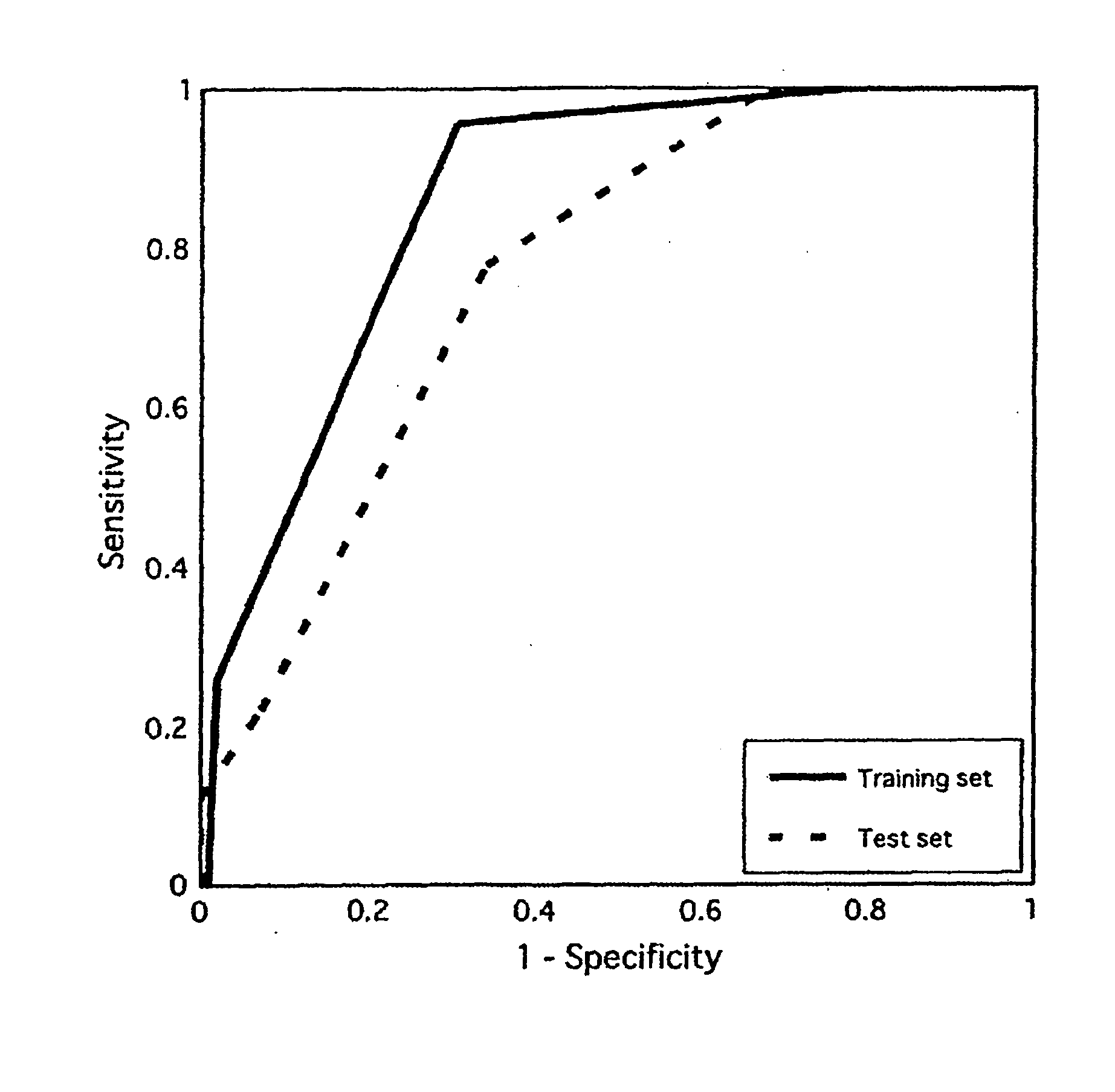DNA chip for prediction of occurrence of late adverse reaction in urinary organ after radiotherapy, and method for prediction of occurrence of late adverse reaction in urinary organ after radio therapy using the same
a technology of dna chip and radiotherapy, which is applied in the field of dna chip for predicting the occurrence of late adverse reactions in urinary organs after radiotherapy, can solve the problems of no means or methods for predicting the occurrence of late adverse reactions in urinary organs, and achieve the effects of appropriateness, easy determination and appropriateness
- Summary
- Abstract
- Description
- Claims
- Application Information
AI Technical Summary
Benefits of technology
Problems solved by technology
Method used
Image
Examples
examples
1. Methods and Materials
[0067]197 patients included in this study were participants in the clinical studies of C-ion RT for PCa at the National Institute of Radiological Sciences (Chiba, Japan). All patients and 227 healthy donors provided written informed consent to participate in the study. The Ethical Committee at the National Institute of Radiological Sciences approved the study. All identifying information was managed at the Medical Information Processing Office of the Research Center Hospital for Charged Particle Therapy of the National Institute of Radiological Sciences.
[0068]The first patient group (n=132) was enrolled between January 2002 and March 2006. The second patient group (n=65) was enrolled between March 2006 and December 2006.
[0069]The subjects were divided, approximately 2:1 into two sets: a training set and a test set.
[0070]In the training set, 109 subjects (86.2%) were diagnosed with Grade 0 dysuria. 23 subjects (17.4%) had Grade 1 dysuria 3 months after RT.
[007...
PUM
 Login to View More
Login to View More Abstract
Description
Claims
Application Information
 Login to View More
Login to View More - R&D
- Intellectual Property
- Life Sciences
- Materials
- Tech Scout
- Unparalleled Data Quality
- Higher Quality Content
- 60% Fewer Hallucinations
Browse by: Latest US Patents, China's latest patents, Technical Efficacy Thesaurus, Application Domain, Technology Topic, Popular Technical Reports.
© 2025 PatSnap. All rights reserved.Legal|Privacy policy|Modern Slavery Act Transparency Statement|Sitemap|About US| Contact US: help@patsnap.com



